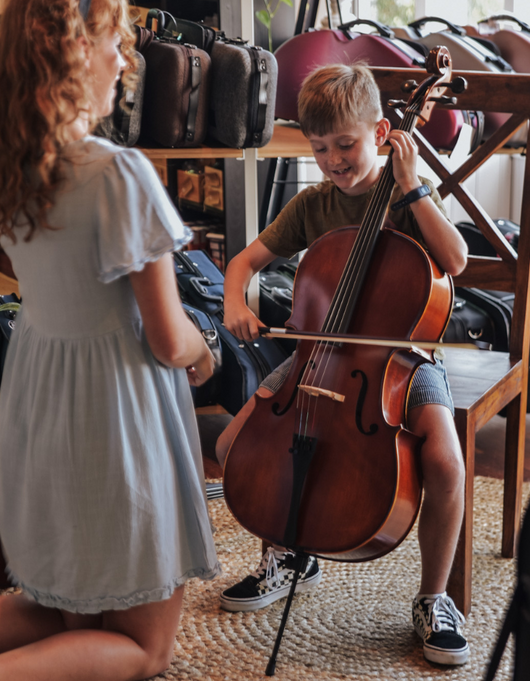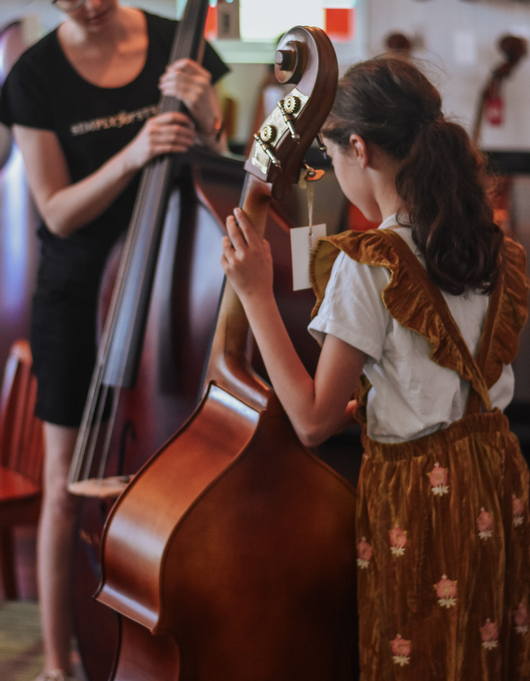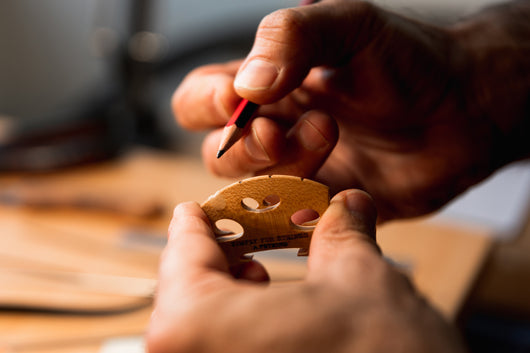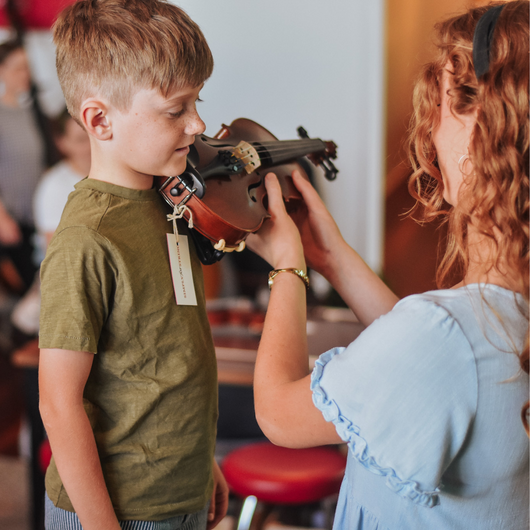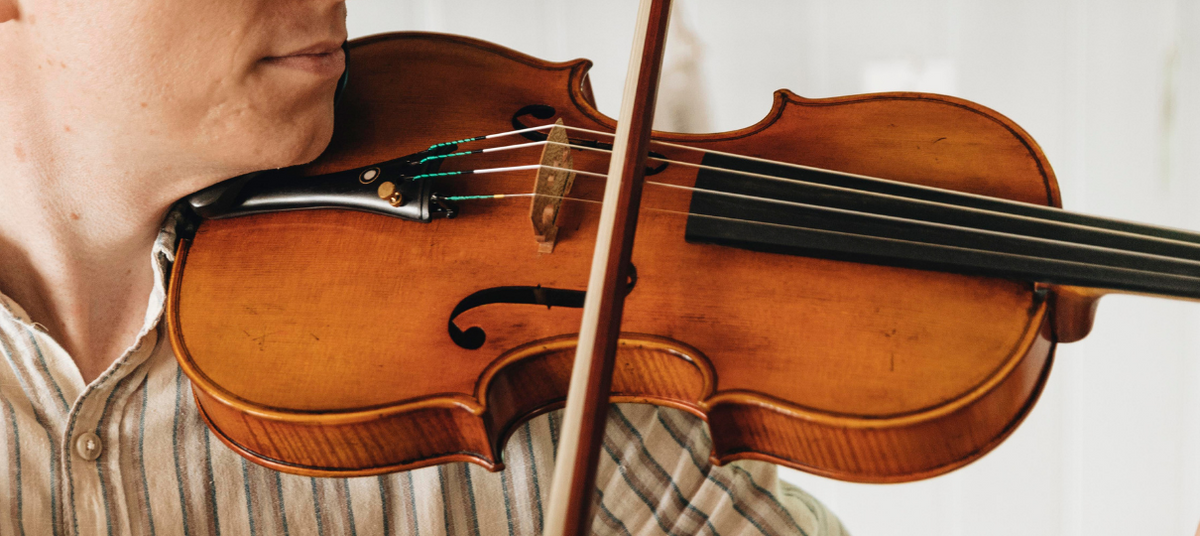So you’ve just discovered that your violin, viola, cello or double bass has something called a soundpost? What is it, you ask? The soundpost is a very special piece of dowel that has been cut to exact measurements and is fitted inside your instrument. Let’s explore this important piece of wood a little further.
What is a soundpost made out of?
The soundpost made from spruce - a type of conifer (fir tree) that is part of the Pine tree family.`
Spruce trees are mostly grown in colder climates, so they develop slowly. This makes the grain nice and dense, and gives spruce the ability to carry sound very well.
When luthiers buy timber for stringed instruments, they need to select batches of wood which will carry sound and resonate correctly. This is referred to as “tonewood”.
Spruce is a type of tonewood and is the main timber used to make 1/ the top plate of the instrument (also called the belly or soundboard); 2/ the blocks and bass bar, both of which are internal fixtures; and 3/ the soundpost. The back, sides, neck and bridge are maple.
Spruce is commonly used for the soundboard in stringed instruments, including guitars, because although a relatively soft wood it is also quite strong, lightweight, and will usually improve tonally over time.
The soundpost timber is cut into round pieces of dowel and given a very specific diameter for the size of each instrument. There’s plenty of engineering and physics that go into making an instrument!
Learn about the art of violin making.
What does the soundpost do?
It has two very important functions - sound and structure.
The first is tonal (to do with sound). The soundpost is sometimes called the “soul” of the instrument. The soundpost carries the sound from your spruce soundboard (top of the instrument) right through to the maple back. This allows the entire instrument to resonate and amplify the sound you are playing on the strings.
It is referred to as the soul of the instrument because the shaping and placement of your soundpost dramatically affects the quality of sound production. In fact, we can position the soundpost to make your violin, viola, cello or double bass brighter, harsher, warmer, softer. Correct positioning will allow more resonance and more of the natural harmonics to be displayed.
The second is structural. Your soundpost, below the treble foot of the bridge, works together with the bass bar (which is glued under the soundboard opposite the soundpost, just beyond the other side of the fingerboard), providing support to the top plate of the instrument.
There are several kilograms of pressure coming from the strings as they push down on the bridge. Your instrument has an arched top, carefully carved into this shape to create a strong and resonant roof, a bit like the arched dome in a cathedral. That shape gives it a natural strength, but if the soundpost wasn’t there, in time the treble foot of the bridge (ie, the foot that’s under the higher-sounding strings) would eventually make a crack through the spruce top. This can happen in cases where a soundpost has not been professionally carved and placed correctly.
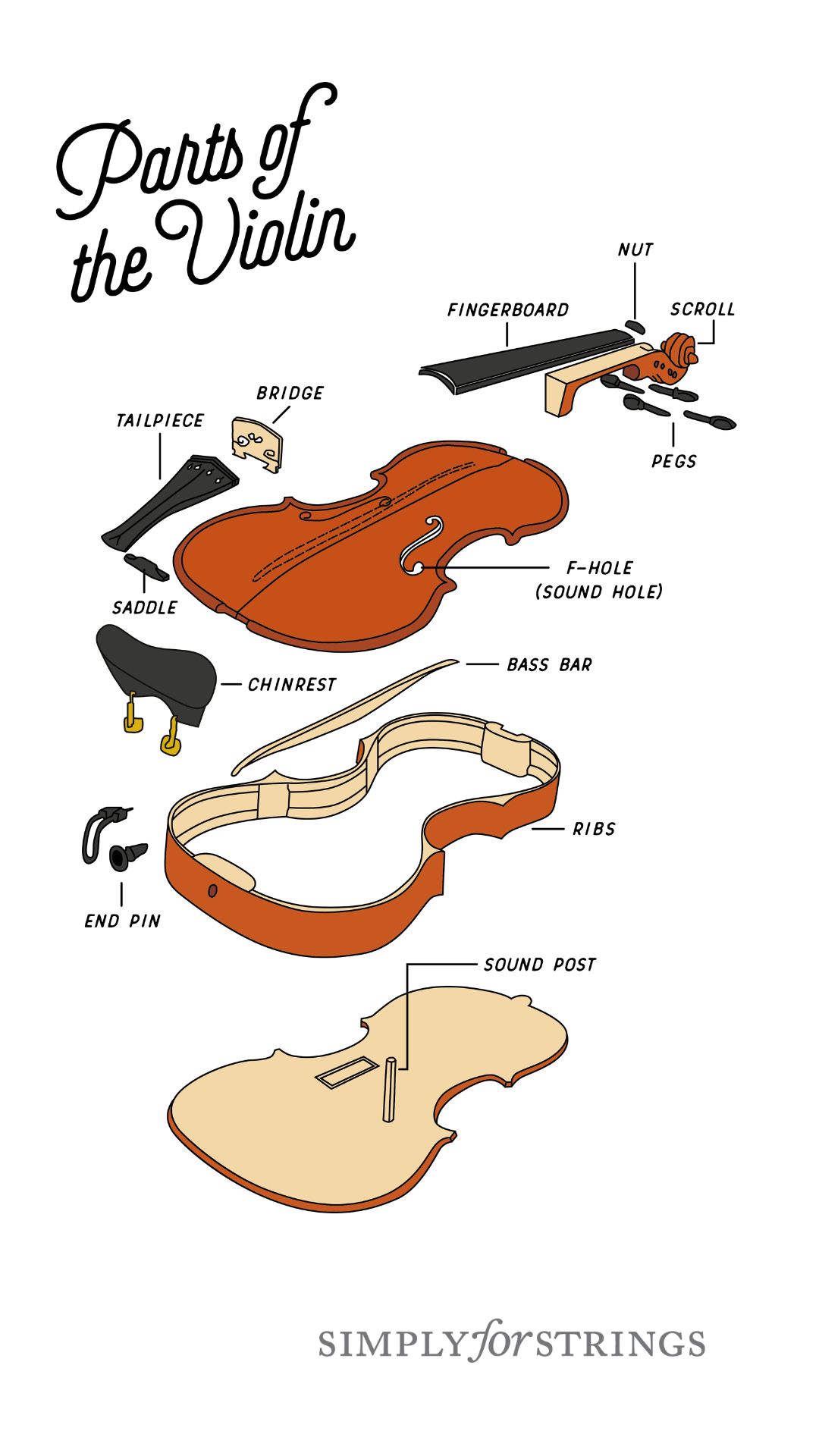
Where does the soundpost belong?
Take a look at the front of your instrument. You can see the bridge with its two feet. Just beyond those feet, closer to the edge of the body are two long holes in the shape of an old-fashioned letter F. They are called F-holes. Now take a look inside the F-hole on the right side (looking at the instrument from the front). If the soundpost is positioned correctly you will see it near the foot of the bridge that is closer to this side.
The right foot is also called the treble foot. Your soundpost should be very close to it, but in most cases it won’t be directly underneath.
Placement is usually several millimeters below the foot, in the direction of the tailpiece. It’s not lined up with the outer edge, but is more in line with the middle of the leg. It should also stand straight, and not bend left or right.
The placement will vary because when a soundpost is being fitted, the luthier tests your instrument for tone quality. Higher or lower, left or right: it’s adjusted to bring the best balance of sound across all four strings. Too much one way and your lower strings mightn’t be quite as clear but your higher ones will be very bold. Too much the other way and we reverse the issue. Too close to the bridge and you may get a very hard sound that is uncompromising; too far away, and it will be less focussed, even a bit fuzzy perhaps.
Image below: a soundpost fitted in a violin. You'll notice that it is not quite right - this soundpost is leaning to one side and isn't providing the best quality sound possible for this violin.
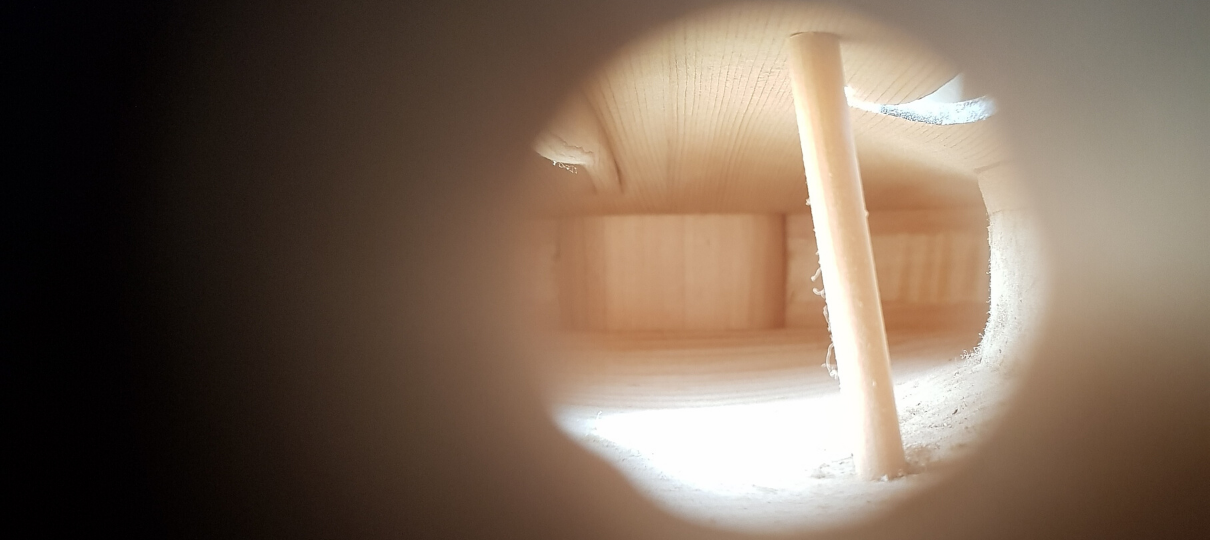
How is the soundpost fitted?
We recommend having your soundpost fitted and adjusted by professionally trained luthiers. We don’t recommend trying to re-fit your soundpost if it falls over - you could cause unwanted damage to the dowel which could affect your sound.
To be fitted to your instrument, you soundpost is cut to the appropriate length, its ends are trimmed to the correct shape (matching the curve in the front and back where it makes contact with the main body) and it is installed after the instrument has been assembled and the top is already glued in place. The ends have to be “flush” against the top and bottom, making full contact. Otherwise the sound transmission from front to back won’t be as good. Also if the ends are not in full contact, this can be another cause of damage to the belly (ie: cracks).
The soundpost is inserted using special tools that allow us to grab it, move it around, pushing and pulling into position. The main tool is called a soundpost setter. If it falls over, professionally trained luthiers use those same special tools to retrieve the soundpost and correctly position it all over again. We don’t recommend you use these tools without training beforehand - you don’t want to cause any damage to your instrument or soundpost.
Read our ultimate care and maintenance guide.
What do I need to do if my soundpost falls over?
Immediately remove the bridge. If you want to leave the strings on, then secure them by tightening the pegs. Wrap the tailpiece or put something safe underneath so that it doesn’t scratch the body of the instrument. Then you can safely transport your instrument to a professionally trained luthier to have a new soundpost (and potentially bridge) fitted.
Learn more about Repairs and Servicing at Simply for Strings.
How does the soundpost falling over affect my instrument?
Your violin, viola, cello or double bass needs the soundpost to be where it belongs so you can have the best quality tone and responsiveness. Remember it’s the soul of the instrument.
It’s also in place as a protection for the spruce top. Front and back plates are carefully carved with a curve in the middle, giving strength and creating a wonderful sound chamber on the inside. Without a soundpost, constant pressure of many kilograms on the top (strings pulling down on the bridge, and a little extra from your bowing) has been known to make the belly change shape, flattening over time.
Over the years, we have seen cases where an unsupported bridge foot created an indentation in the belly; more often we see it cause a crack to develop along the grain of the soundboard, in line with that foot. As you can imagine, repairing a bridge foot crack is time-consuming and costly, so it’s best to always have your instrument regularly serviced by a professional luthier to avoid any unwanted surprises.
Why do soundposts fall over?
They can fall for a variety of reasons. A hard jolt can possibly knock it out of place, but is very unlikely. Dropping the instrument is never going to be good for it! Sometimes if it falls hard enough the soundpost can be dislodged. In reality it shouldn’t, because the string tension on the bridge is helping keep the soundpost in place.
If a soundpost has been placed incorrectly it could either be too loose (risk of falling out of place) or too tight (risk of creating a crack in the top or bottom plate). Age can imperceptibly shorten the soundpost: the several kilograms of pressure mentioned earlier, coming from the strings as they pull down over your bridge, will over the years compact the wood in your soundpost.
When it has compacted slightly, it won’t fit as well as it once did. Also it possibly won’t carry sound as well as it first did. This is why it’s best to regularly service your instrument - especially the bridge and soundpost. If an old bridge needs replacing, best practice says the soundpost does too!
Is there anything I can do to make sure my soundpost stays in position?
Never remove all the strings at the same time (if possible). This takes all the pressure off your bridge and if the soundpost has compacted, it’ll fall over.
When travelling, either have the instrument lying flat on its back OR if it needs to be stored on one side, make sure the right hand side (soundpost side) is down lower. The front and back curve inwards to that side, so the soundpost is less likely to slip.
We hope you’ve picked up some new ideas from this post. If you have any questions, or just want to chat all things string, get in touch with our team of players, luthiers and teachers here at Simply for Strings.




